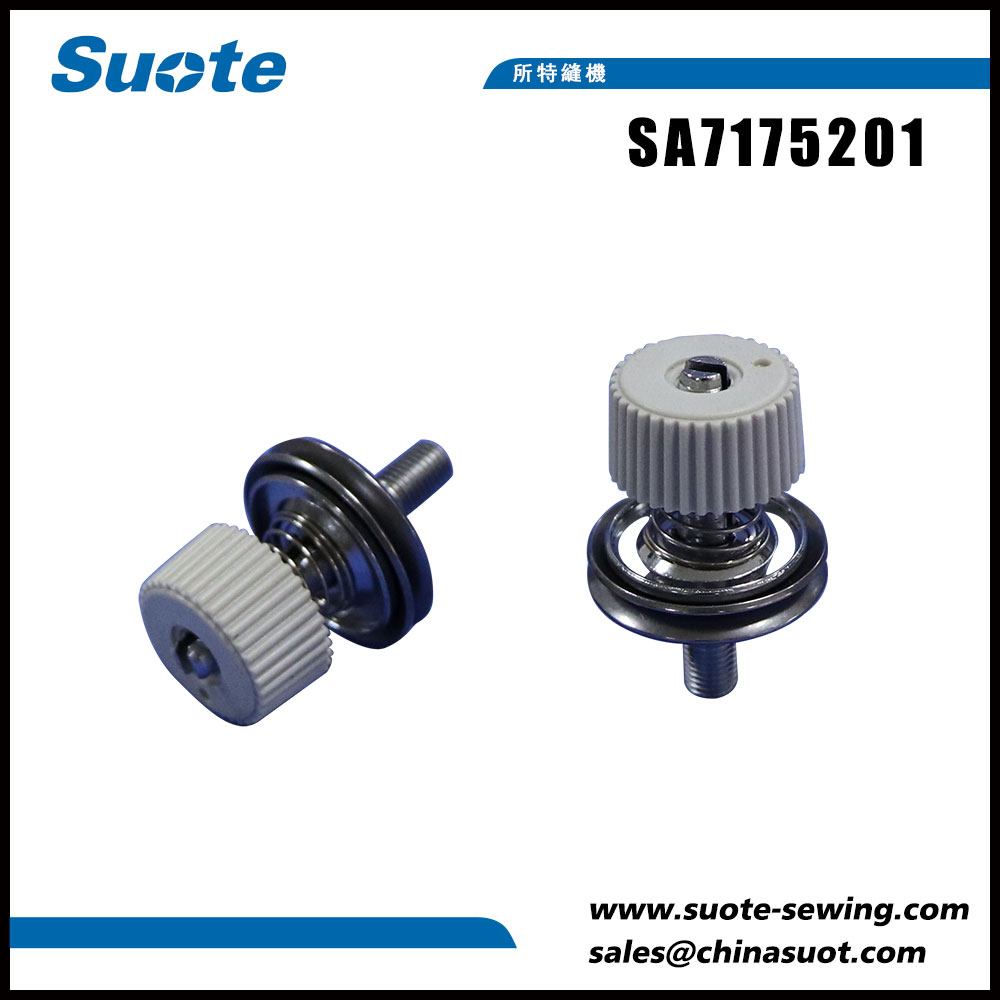What are the safety precautions to consider when using SA7175201 L-Thread Tension Shaft Assy?
2024-10-21

What are the safety precautions to consider when using the SA7175201 L-Thread Tension Shaft Assy?
1. Always unplug the sewing machine before performing any maintenance on the SA7175201 L-Thread Tension Shaft Assy.
2. Use the appropriate tools to remove and install the L-Thread Tension Shaft Assy. Using the wrong tool can damage the part and can cause injury.
3. When installing the SA7175201 L-Thread Tension Shaft Assy, ensure that it is properly aligned with the rest of the machine. Misalignment can cause the machine to malfunction.
Why is proper maintenance important?
It is important to perform regular maintenance on the SA7175201 L-Thread Tension Shaft Assy to ensure that it is functioning properly. Failure to do so can result in thread breakage, uneven stitches, and damage to the machine. Regular maintenance can also extend the life of the part and save you money on repairs.
How often should the SA7175201 L-Thread Tension Shaft Assy be replaced?
The frequency at which the SA7175201 L-Thread Tension Shaft Assy needs to be replaced depends on the usage of the sewing machine. For a machine that is used frequently, it is recommended to replace the part every 6-12 months.
What are the signs that the SA7175201 L-Thread Tension Shaft Assy needs to be replaced?
1. Unusual noise coming from the sewing machine.
2. Thread breakage or uneven stitches.
3. Difficulty adjusting the thread tension.
Summary
The SA7175201 L-Thread Tension Shaft Assy is an essential part of any sewing machine. Regular maintenance and proper handling are important to ensure its longevity and optimal performance. Signs of a malfunctioning L-Thread Tension Shaft Assy include unusual noise, thread breakage, and difficulty adjusting the thread tension.
Zhejiang Suote Sewing Machine Mechanism Co., Ltd is a leading manufacturer of high-quality sewing machine parts in China. Our company is dedicated to providing the best products and services to our customers. Contact us at sales@chinasuot.com to learn more about our products and services.
Scientific Research References:
1. Hsieh, C., & Lai, H. (2018). A Study on the Effect of Thread Tension on the Seam Quality of Garment. Journal of Fiber Bioengineering and Informatics, 11(1), 33-41.
2. Kim, W., Kim, J. Y., & Kim, M. (2019). An Innovative Method for Measuring Sewing Thread Tension Based on Machine Vision. Applied Sciences, 9(3), 491.
3. Kousuke, I., & Takayuki, G. (2017). Effects of the Thread Tension on the Strength of Seam. Journal of the Textile Machinery Society of Japan, 63(5), 85-89.
4. Kim, D. H., & Kim, H. J. (2020). Development of a Wearable Sensor to Measure Thread Tension in Garment Assembly. Sensors, 20(18), 5183.
5. Li, W. W., Yao, T. H., & Yang, Y. J. (2018). Study on the Relationship between Thread Tension and Seam Quality Based on Digital Image Processing. MATEC Web of Conferences, 173, 03017.
6. Du, X., & Li, X. (2017). Research on the Factors Affecting the Thread Tension of Industrial Sewing Machine. Journal of Fiber Bioengineering and Informatics, 10(2), 49-55.
7. Kim, S. E., Hwang, B. N., & Lee, H. J. (2019). An Automatic Thread Tension Control System for a Sewing Machine. Journal of Mechanical Science and Technology, 33(10), 4849-4856.
8. Khazaei, M., Abedinia, O., & Ghasemi, R. (2018). A Study on the Effects of Thread Tension and Needle Size on Stitch Formation and Seam Pucker. Fibers and Polymers, 19(10), 2021-2028.
9. Lee, H. J., Kim, S. E., & Hwang, B. N. (2019). Development of a Real-Time Thread Tension Measuring System for a Sewing Machine. Journal of Mechanical Science and Technology, 33(6), 2833-2839.
10. Hsieh, S. J., & Wang, Y. T. (2017). Intelligent Thread Tension Control for Digitalized Sewing Machine. Journal of Textiles and Polymers, 5(2), 62-71.






